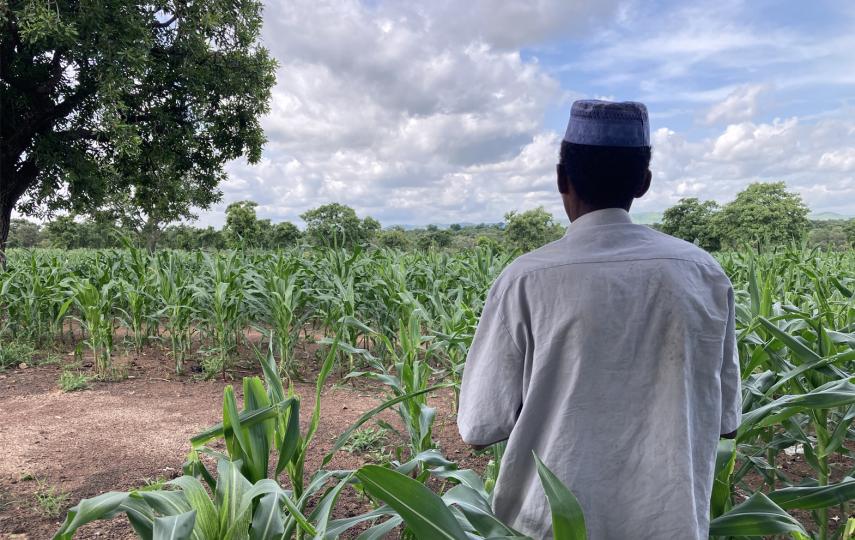In the northeastern Isiolo region, drought management officer Paul Kimeu told IRIN: “People are no longer attacked using spears and arrows. Sometimes very sophisticated guns are used, increasing fatalities.”
According to OCHA, the onset of the short rains, from mid-October to December, tends to increase the likelihood of cattle raids and thus conflict, because this is when pastoralists restock their herds and it also when rites of passage take place, increasing the demand for livestock.
In Samburu district, morans, or young warriors, frequently target livestock traders and passenger cars on main roads.
“People are not able to take their livestock to the market in Dagoretti [in Nairobi about 350km south],” said Peter Emanman, a resident of the Samburu town of Maralal. “If security were improved, people could be self-reliant,” he said.
Umuro Roba Godana, executive director of the Marsabit-based Pastoralists Integrated Support Programme (PISP), a national NGO supporting pastoral livelihoods in the north, is worried there may be even more conflict now that the rains have come. “If you steal during the drought, where do you take stunted animals?” he asked. “People fight when there is plenty, not a lack.”
Conflict over water and pasture
Livestock movement in search of water and pasture remains a driver of conflict. “Competition for scarce natural resources is widely understood to be a primary cause of conflict in the region,” notes UK think-tank, the Overseas Development Institute (ODI), in a November report, Pastoralists’ vulnerability in the Horn of Africa, Exploring political marginalisation, donors’ policies and cross-border issues.
“The movement of livestock and herders often transcends national borders and pastoralist groups across the region depend on the same communal pool of natural resources. Endemic conflict represents one major obstacle to the free movement of pastoralists and their livestock, and therefore greatly contributes to pastoralists’ chronic vulnerability in the region.”
|
Photo: Siegfried Modola/IRIN  |
| A young Turkana man armed with an AK-47 rifle, Oropoi, northwestern Kenya. Conflicts involving pastoralists associated with resource competition, cattle rustling and arms are widespread and of increasing concern in the region |
“Sometimes there are cross-border attacks,” Rashid Osman, an assistant chief in the town of Moyale, told IRIN, adding that these were especially frequent during the rains.
“During the drought, the police are sent to seal the wells, but during the rains it is less secure,” he said. “Rainfall is an indicator of conflict."
Land demarcation is also presenting a problem, Godana of PISP told IRIN. “Communities are claiming ownership of territories and regions yet … the boundaries are not clear,” he said.
The loss of communal grazing land to farming and environmental degradation has also fuelled conflicts in a number of pastoral areas across the Horn of Africa region, states ODI, noting that freedom of movement over large areas was a crucial element of the pastoralists’ dry lands resource management system.
“Competition for scarce natural resources is widely understood to be a primary cause of conflict in the region and is in part related to the inability of pastoralists to assert their land rights,” ODI adds.
“The absence of the government in some parts makes people take the law into their own hands,” said PISP’s Godana. Poor leadership and a breakdown in community values also help to foster insecurity, he said, adding: “The role of elders is fast diminishing and people are [instead] operating in cliques.
“Nowadays, even the elders cannot sanction raids.”
Remote areas in the north rely on community-organized security groups such as home guards and police reservists to maintain law and order. This has in part led to the proliferation of weapons in the north - as has the proximity to unstable neighbours such as Somalia.
According to one Marsabit resident, the availability of weapons was to some extent a deterrent to petty crime. “Here, even if you leave the door to your house open no one will come in. You never know what kind of weapon your neighbour may have.”
Involvement in wider conflict
According to the ODI, politics can be a driver of conflict in pastoralist areas.
|
Photo: Kenya Humanitarian Update  |
| Reported killings in pastoral areas for the years 2008 - 2009 |
This is true in Moyale, where the District Commissioner, Joshua Nkanatha, confirmed that there were “occasional incursions by the Ethiopian army” in search of OLF forces. “We tell them [the Ethiopian forces] to inform us of impending incursions,” he said.
Some residents see the cattle raids as a ploy to drive away specific communities ahead of 2012 national polls, Samburu DMO, Samuel Lempushuna told IRIN. New election constituencies are likely to be created before the polls and ethnically dominant communities stand a better chance of electing a leader from among their own.
Already, a new district, Baragoi, has been carved out of Samburu, north of the main town of Maralal. It borders the Turkana region, and is mainly occupied by the Samburu and Turkana, who clash from time to time, which could result in the Samburu being marginalised.
aw/am/mw
| [This article is part of a special package "Another Kenya". For more reports: http://www.irinnews.org/IndepthMain.aspx?InDepthID=83&ReportID=87469 ] |
This article was produced by IRIN News while it was part of the United Nations Office for the Coordination of Humanitarian Affairs. Please send queries on copyright or liability to the UN. For more information: https://shop.un.org/rights-permissions




